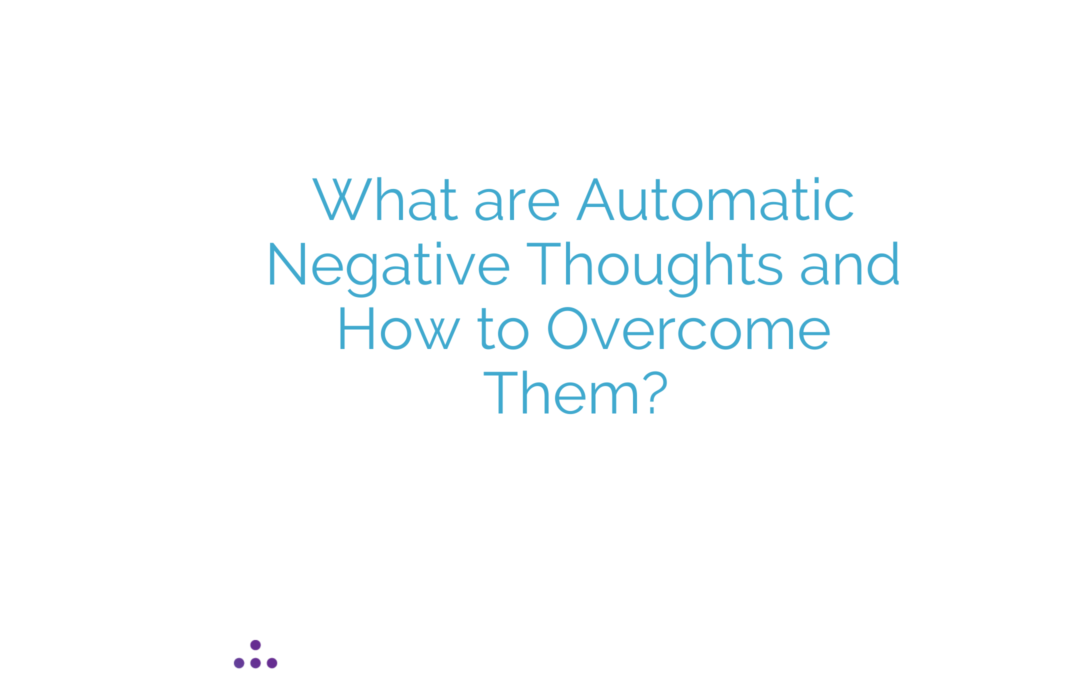
The average human brain has up to 70,000 thoughts per day and many of which can be negative. Psychologists have labelled these automatic as negative thoughts. Automatic negative thoughts are the conscious or subconscious thoughts that occur in response to everyday events. Automatic negative thoughts can be stressful, but can be overcome with simple techniques to challenge and control them.
Automatic Negative Thoughts (ANTs) can be defined as:
Automatic: They just seem to “pop” into your head without being invited.
Negative: “Put yourself down”, “worst case scenario”.
Thoughts: “The talking voice in your head” based on experience.
ANTs are irrational and self-defeating and there are many different ways your thoughts lie to you to make situations out to be worse than they really are.
Here are some common ANTs:
- All-or-nothing thinking: You see things in black and white categories. If your performance falls short of perfect, you see it as a failure. These ANTs prefer to speak in terms of always, never, all or none, and everyone or every time.
- Mental filter: You pick out a single negative detail and dwell on it exclusively so that your vision of reality becomes darkened. You discount the good things that have happened. This ANT loves to take a positive experience, relationship, or situation and turn it into a negative one.
- Fortune telling: You anticipate that things will turn out badly before the event and you feel convinced about this. This ANT predicts the future but is only focused on projecting negative outcomes that have little basis in reality. They are unable to perceive any possible positive future.
- Mind reading: You assume that people are reacting negatively to you when there’s no definite evidence for this. You imagine you know what others are thinking. This ANT believes it knows with 100% certainty what is going on in someone else’s mind. Even though the other person has not told you their thoughts or opinions.
- Thinking with your feelings / Emotional reasoning: You assume that your negative emotions reflect the way things really are “I feel it, therefore it must be true”.
- Should statements / Guilt beatings: You try to motivate yourself with should or shouldn’t statements, as if you had to be punished before you could be expected to do anything. “Must” and “oughts” are also offenders. The emotional consequence is guilt. When you direct “should” statements towards others, you feel anger, frustration, and resentment. This ANT imposes rigid rules on yourself and others.
- Overgeneralisation: You see a single negative event as a never-ending pattern of defeat. You see a pattern based upon a single event and overgeneralise it, such as “Nothing good ever happens” when one thing goes wrong.
- Labelling and mislabelling: These are an extreme form of overgeneralisation. Instead of describing your error, you attach a negative label to yourself: I’m a loser”. When someone else’s behaviour rubs you up the wrong way, you attach a negative label to them “They are a jerk”. Mislabelling involves describing an event with language that is highly coloured and emotionally loaded.
- Personalisation: You see yourself as the cause of some negative external event for which, in fact, you were not primary responsible. Personalisation leads to guilt, shame, and feelings of inadequacy.
- Blame: You blame yourself or you take responsibility for something that wasn’t your fault. Conversely, you blame other people for something that was your fault. This ANT doesn’t want you to ever admit your mistakes or take responsibility for your actions. It wants you to play the victim.
3 Simple Ways to Overcome your ANTs
- Eliminate ANTs as they attack
The first step in eliminating ANTs is to become aware of the negative thought that you have during your day. Then identify which of the ANTs is at play. Once you have done that, challenge the ANT by asking yourself if the thought is 100% accurate? As soon as you remind yourself that it’s not true the ANT begins to weaken.
- Replace ANTs with a more positive thought
Buddha wisely said that nothing can harm you as much as your own thoughts. The key to being happier and more positive lies in your ability to successfully flip your ANT and turn it into a PAT (Positive & Affirming Thought). An example: This ANT, “My presentation is going to go horribly” becomes this PAT, “My presentation is going to be amazing”.
- Before you speak….THINK
T – is it true?
H – is it helpful?
I – is it inspiring?
N – is it necessary?
K – is it kind?
I hope you enjoyed reading this article and that you have gained some knowledge about what Automatic Negative Thoughts are and learned some simple ways to overcome them. Please share this article with anyone who might benefit from it.
© Maria O'Dwyer Coaching. Unauthorised use and/or duplication of this material without express and written permission from this site’s author and/or owner is strictly prohibited. Excerpts and links may be used, provided that full and clear credit is given to Maria O'Dwyer Coaching with appropriate and specific direction to the original content.

